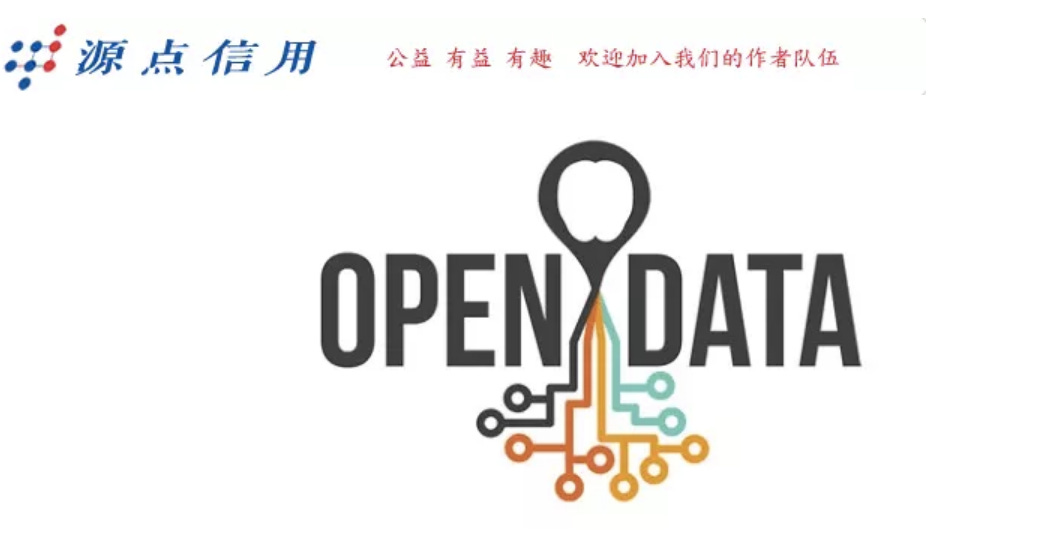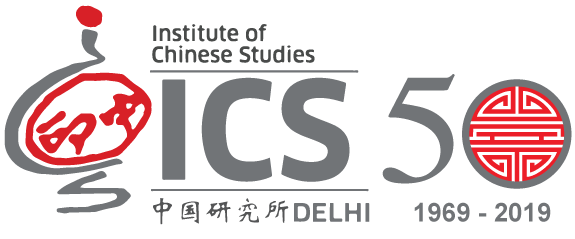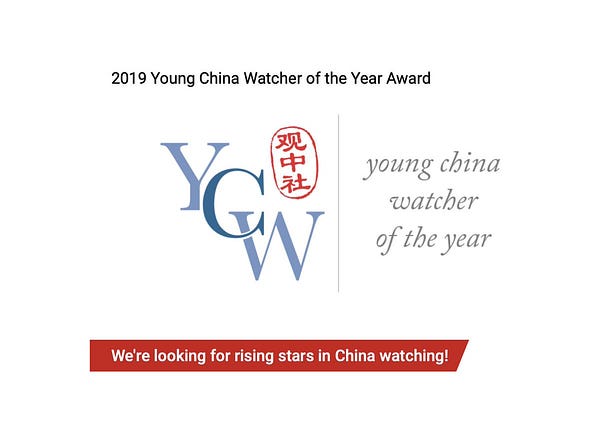ChinaIndia Networked #3 🗝 Social Credit + Govt Open data
+ nominations open for YCW Young China Watcher of the Year & Yenching-Harvard PhD application.
Welcome new subscribers, especially those who attended the ‘Digital Silk Road: Implications for India’ round-table in New Delhi last week, co-hosted by the Institute for China Studies (ICS) and National University of Singapore’s Institute for South Asia Studies.
ChinaIndia Networked is a newsletter by me, Dev Lewis, highlighting the networked relationship between the two regions at the intersection of technology, society, and politics. I’m a Fellow at Digital Asia Hub and Yenching Scholar at Peking University, where i’m conducting research on the Social Credit System. Follow me on Twitter @devlewis18 or write to me at devlewis@protonmail.com.
I presented on China’s AI ecosystem, drawing on a paper I wrote last year, with added thoughts on how Delhi can engage. Each of the speakers made excellent presentations that will be published shortly in what promises to be a must-read collection of reports on the increasingly intertwined tech relationship between China and India.
While in Delhi I also attended Medianama’s Roundtable on Regulation of Online Content— a lively, open discussion with lawyers, content creators, streaming platforms, and even concerned mothers, thrashing out ideas and perspectives. For Indian policy makers tasked with the job of grappling with new technologies, giant companies, and shifting cultural habits, this kind of multi-stakeholder debate is an asset. The quality of government drafts so far, sadly, suggests they are not being listened to. As one speaker at the ICS event put it: The Indian government is learning from China, but not in the areas that it should be.
Final thought from Delhi: the China and the tech policy community should talk to each more. There’s much to gain for both.
On that note, to the translation.
Were you forwarded this newsletter? Subscribe now!

How to harness data for the collective benefit of society is a critical issue globally, especially for two of the largest data producers in the world. Check out this list of the kind of amazing projects possible thanks to open government data. I’m currently conducting research on the use of data as part of the Social Credit System for a Digital Asia Hub podcast project and I will likely feature more translations of reports that I think may be interesting in the Indian context.
Today’s issue features a translation of a journal article that does a quantitative comparative analyses of 8 Government Open Data Credit Service Platforms in China: Beijing, Shanghai, Jiangxi and Guizhou (provincial-level), Jinan, Guangzhou, Shenzhen and Chengdu (city-level). This translation was a joint effort with Jordan Schneider of ChinaEcontalk podcast and Newsletter fame.
The set up of these data platforms is part of Chinese government efforts towards making government data more accessible to the wider public. The action is at the city and provincial level, as respective governments build out the IT infrastructure and try to dismantle long-standing silos between different government departments. This is very much a sub-goal of the Social Credit System (SCS). This journal article by Xiao Diyu is published in the Journal of Library and Information Science (2019 Volume 7) [图书情报导刊] and carried on the Yuandian Credit 源点信用 Wechat public account, one of the best sources of news and analyses on everything related to Social Credit in China. The article itself is extremely meta. If open data is your jam then I highly recommend you read it in full; otherwise the highlights and commentary below should be enough.
What exactly is ‘government credit data’?
Information such as administrative licenses, penalties, and awards that are generated and recorded by administrative agencies.
Type of open data available:
Administrative penalties, administrative licenses, land ownership, tender notices, credit rating, corporate credit, foreign business, revocation, credit services, and rights protection.
City platforms > provincial level platforms: Guangzhou (39) has the most number of data sets, followed by Shenzhen (34), and Jinan (26).
Leading providers of open data: Commerce, quality inspection, tax, and housing management departments.
Key challenges identified:
The volume of data is too small to be able to be used effectively. For example Shenzhen with just 39 data sets is the highest in the country. Even Shanghai and Beijing have just 17 and 10 data sets respectively.
The quality and quantity of credit information on platforms is not ideal. Current data sources are concentrated from a handful of departments, and there is no access to historic data or a uniform classification.
The total amount of visits and downloads of credit information is low. Beijing pulls in less than 10k visitors and clocks just 1070 downloads (to-date). Shenzhen tops out with 91k visitors, Guizhou ranks bottom with 678 visitors.
Data sharing between ministries is a long standing challenge. Looking historically this is real progress. Clearly these city platforms have a lot to improve on, especially in the size and depth of data sets. Traffic to these platforms suggest that people are either unaware or not able to find much use. Related effort not mentioned here is the Credit China platform (at the central level) which aggregates and makes blacklist data from over 40 agencies (although at the moment mainly from the Supreme People’s Court) publicly searchable— a less talked about but important initiative within the SCS.
Last week in Delhi, three data governance-related stories made headlines:
The Indian government is planning to setup and eventually monetise an open data platform for 100 cities as part of its Smart Cities Mission by 2020.
India already has a data.gov platform that aggregates data from the state and center, which follows the National Data Sharing and Accessibility Policy (NDSAP 2012). Some cursory research suggests there are numerous issues with quality and access.
The Ministry of Electronics and Information Technology (MeitY) has setup a committee to create a data governance framework for non-personal data.
Meity suggests it may make it mandatory for companies to sell non-personal data to government entities or companies.
The third headline touches on an important tension—opening relevant “public-interest” data held by companies.
This is out of scope for the open data platforms in China.
In fact, just last week news broke about the unsuccessful efforts so far to get tech giants Ant Financial (shareholder in Paytm) and Tencent to share financial data with Baihang Credit—a “public-private” entity created by the People’s Bank of China (PBOC) in 2017 to serve the function of breaking proprietary silos and pooling private and public financial data towards the build out of a nationwide credit system. The article reports (I’ve translated three paragraphs):
China's credit information system functions on a "government + market" two-wheel drive mode. The PBOC’s Credit Reference Center (中国人民银行征信中心CRC) is mainly responsible for national credit and information database. At present, the CRC has access to credit information data of more than 3,500 banks and financial institutions, as well as information data, credit information of about 1 billion people, and credit information of more than 26 million companies and legal entities. The CRC processes an average of 5.55 million personal credit reports and 300,000 corporate credit reports per day.
In terms of corporate credit reporting, a market-oriented competition pattern has basically taken shape. As of the end of August 2019, there are 133 corporate credit reporting agencies in 21 provinces across the country that have completed the filing process at the central bank. However, in the field of personal credit information, there are still many difficulties in marketization. At present there are still more than 400 million people whose information is not fully captured in CRC. This is because most of financial information of this group of people has been cornered by Internet giants.
WeChat has 1 billion users worldwide with more than 800 million WeChat pay users. Alipay has more than 1 billion users worldwide. Tencent and Alibaba have monopoly-like advantages in Internet user data.
The challenge of pooling public and private data is a point that has been repeated in my conversations with people in industry and government.
Its interesting to hear of the Indian government talking about monetization as a route but I struggle to see how this can actually take place, not to mention the concerns about monetization and who benefits. The Chinese experience so far reflects the difficulty of the job.
🔌Get Networked
opportunities to get out there and plug into the larger community
The Yenching-Harvard PhD (fully funded) fellowship includes a year in Beijing and Cambridge. If you’re a PhD student in India with serious China aspirations jump on this.


Nominations for the YCW Young Watcher of the Year Award is open.
The award seeks to recognize a young professional who has made an extraordinary contribution to the global understanding of China, be that in the realm of politics, business, academia, or civil society.
If you, or somebody you know, fits the mold toss a name in the hat. The winner will become only the second winner, following last year’s winner Matt Sheehan, author of new book ‘The Transatlantic Experiment: The Transpacific Experiment: How China & California Collaborate & Compete for Our Future’. It would be great to have more representation from Asia. Deadline to submit: Wednesday, October 9 at 11:59 pm BST.


That’s it for this issue. If you are putting together a ChinaIndia event or program that is open to the wider community please drop me a line i’d be happy to feature it here.
If you were forwarded this, sign up for regular posts to your inbox. Please consider forwarding to friends and sharing on social media, it means a lot when you do!
The views expressed in this newsletter are mine and not representative of Digital Asia Hub as an institution.


